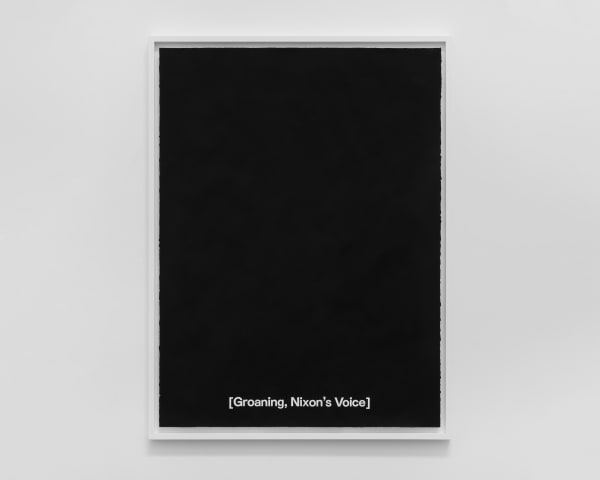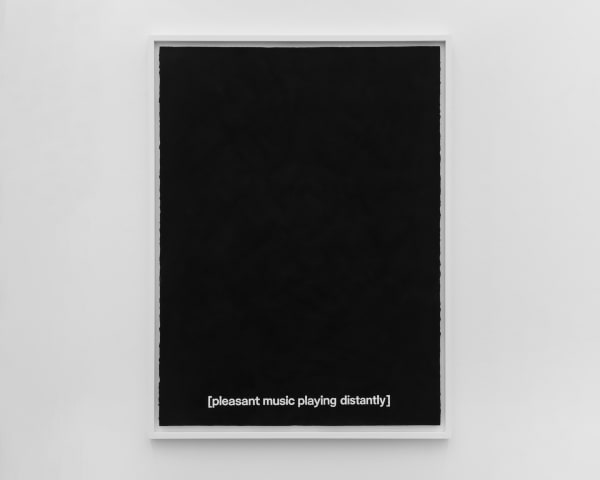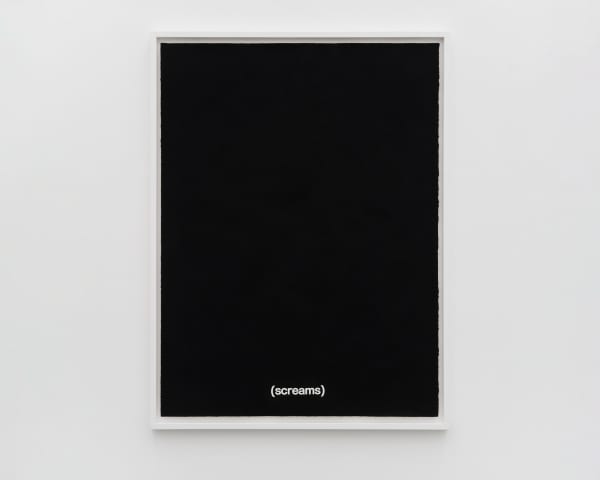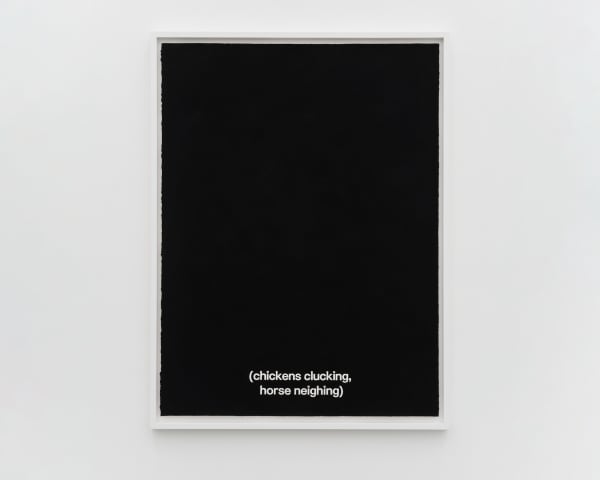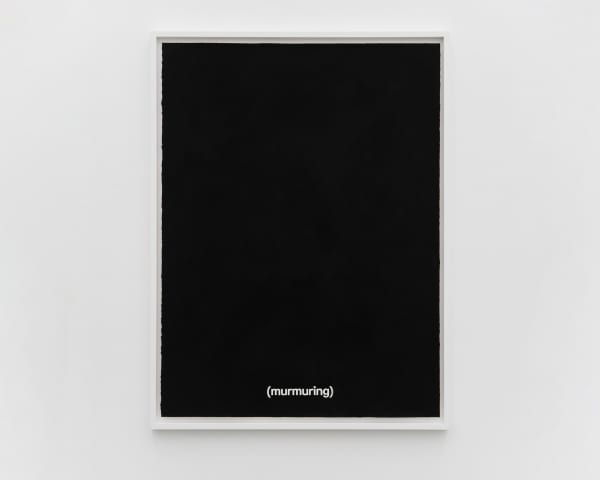-
Gardar Eide Einarsson
GROANING, NIXON'S VOICE
August 15 – September 27, 2025
NILS STÆRK, Holbergsgade 19, Copenhagen, DK
-
Text by writer and curator Bob Nickas, New York, July 23, 2025.What do we hear when we see a word or a phrase related to sound? Do we hear anything at all? [Pleasant music playing distantly.] Can you imagine that? We can’t, not exactly. It’s too vague. [Hyperventilating.] That we can hear easily, hear in scare quotes. The sound of panic, or an asthma attack. (Missile Whistling.) Yes, just ask anyone in Kyiv or Kharkiv these days. Although the phrase “missile whistling” is imbued with a sense of poetics, outside of war zones, of course, the two words acoustically rhyming as they do, you wouldn’t want to be in any proximity to them.Gardar Eide Einarsson is an artist who has often pointedly employed text – DON’T BELIEVE ANYTHING / YOU HEAR AND ONLY / HALF OF WHAT YOU CAN SEE (a 2010 lightbox) – and text specifically in the absence of images, particularly those unbearable – REMEMBER THESE GRUESOME PICTURES? (2012). His most recent series is entirely based on closed captioning, text at the bottom of monochrome fields, usually jet black.
-
Closed captioning, according to AI, which knows all, sees all, absorbs and plagiarizes all, “is a text display of the audio portion of a video or television program, allowing viewers who are deaf or hard of hearing to access the content. It also benefits those who prefer reading or need the additional information provided by sound effects and other audio cues.”
But among those who aren’t hearing-impaired, who prefers audio cues when they’ve just heard (howling), (slurping), and [continuous banging], annoying as they are? In the days of silent movies, were there references to sound? We only recall inter-titles with dialogue. At some screenings, there was live piano accompaniment to heighten the mood, whether comedic or sinister. When foreign films came to the United States, audiences unfamiliar with the language spoken became accustomed to watching the bottom of the screen, looking away from the image to read the subtitles. A distraction from scenes unfolding, visual cues, facial expression, gestures, and so on. In some countries, Italy being one, foreign films were routinely dubbed. Who knew that John Wayne, appearing in a John Ford movie, with his deep, distinctive voice, could speak Italian? (And this before “spaghetti westerns.”)
-
With these “silent movies” of Gardar’s, the gouaches on paper measuring a standard 76 x 56 cm., their more intimate format allows for looking and reading to coexist. And surely no one will complain of being distracted from a solid black field. Among these works there is one which is bright red, and another royal blue. These are chromatic clues to the work of another artist, On Kawara (1932-2014), well known for his Today series, primarily small format paintings which record the date of their making. Began in January 1966 and continued over the course of his life, On considered this activity a daily meditation. Most of his “Date paintings” have black and dark gray grounds, but there are a few that are red and some that are blue. Why has Gardar been thinking about On? He knows that each of the “Date paintings” comes in a box containing a newspaper page from the day the painting was made, allowing for specific events, often political, to come into view, given the neutrality of the painted date. And what about the text pieces of Felix Gonzales-Torres, with historical and cultural references that also place language at the bottom edge of a dark field, accompanied by the years of their occurrence? Gardar, as always, has history and its repetition, at times fatal, in mind; he, like On and Felix, considers artworks as markers in time, their effect not so much a matter of prediction as recurrence.
-

-
There is a famous work by Robert Morris, Box with the Sound of Its Own Making (1961) which, seen in image, appears to be a small, minimal wood cube, but which contains a 3 1/2 hour recording of its construction. Experienced in-person, there are intermittent sounds of sawing, sanding and hammering. How did this work come to be, how long did it take to arrive? Morris provides the answer as meta-soundtrack, though doubtful anyone has listened to it all the way through. Gardar is likely familiar with this work, which insists on its status as work, glancing inspection to the contrary, and he knows, as his closed captioned paintings affirm, that we all live in a world with the sound of its own making and, day after day, unmaking.
[fighter jets flying by] (screams) [marching footsteps]
-
 Photo: Gui Martinez
Photo: Gui Martinez -
For inquiries, please contact: inquiry@nilsstaerk.dk
All prices are displayed excluding tax or VAT, if applicable.
